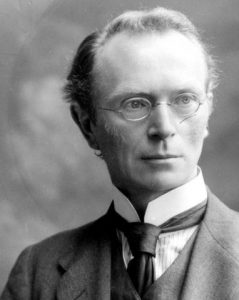My contract with the National Archives to clear the backlog of census corrections emails has come to an end. After eighteen months of grinding through 250 emails a day, it’s a bit of a relief. Yes, I managed to suck the 102,000 outstanding emails into a database that allowed easy comparison between the original image and the suggested corrections, and yes that also meant it was possible to identify many duplicate suggestions.

But the low-hanging fruit were all picked a long time ago. Over the past months most of the corrections seem to be along the lines of “My granny was 17, not 16. And her surname was Browne, not Brown.”
Argh.
The 90,000 emails (88% of the total) contained almost a quarter of a million suggestions, 95,000 correct, 80,000 duplicate and 40,000 inaccurate. I can guarantee there will be no official enquiry into cost overruns or ballooning budgets.
Exposure to the censuses at this scale gives insights into some of their peculiarities. A surprising number of people in 1901 and 1911 were hazy about precise family relationships. Grandparents repeatedly list their grandchildren as nephews or nieces. Why? In Italian nipote actually means both “grandchild” and “niece or nephew”, so perhaps something deep in our mental family structure equates the two-step distance of sibling’s-child and child’s-child. Or maybe it was just doddery grandparents. In any case, their descendants wanted it corrected. And of course it couldn’t be, because whatever was recorded on the form has to appear in the transcript.
The transcribers enforced this fanatically when it came to religion, for some reason. Not surprisingly, many people wanted “Roaming Chatilic”, “Presbitrian” and “Babtist” corrected, but if that’s what was written … On the other hand, there were many stinkers in Ireland a century ago, but none recorded “Free Stinker” as their religion.
The most poignant were emails where people expanded on the information supplied, correcting “Scholar” to “My grandmother”, expanding initials or later lives or even, in one case, washing the family dirty linen a century later:
Transcribed: John Murphy son 10
Correction: ILLIGITIMATE NO RELATION
The mistranscriptions kept me sane, especially the occupations: “Panty boy” for Pantry boy, “Alien apprentice” for Draper’s apprentice, “Publican and Flasher” for Publican and Flesher, and the evergreen “Penis tuner” for “Piano tuner”. Fine old Edwardian trade, penis tuning.
I also came across unexpected individuals. The real Thady Quill, not rambling, nor roving, nor footballing, nor courting, just a simple farm labourer.

Alas Eoin McNeill no longer leads the Garlic League .
But the League lives on!
Thank you, John, for your diligence and perseverance.
In an upcoming blog, if not here, could you please address a strategy for finding ancestors in the census when dealing with the incorrect information that cannot be changed in transcription? Besides trying alternative ages (16 instead of 17), should we try alternative relationships, niece/nephew versus grandchild? Any other suggestions?
Thank again!
I have found many transcription errors in Canada too. Old writing is sometimes very difficult to understand- I have found baptism and marriage records where I cannot read a single word of the Priest’s writing while others have beautiful penmanship. On a completely different topic I have a copy Clans and Families of Ireland- a fascinating book that has helped immensely in my research- pointing me to areas to search for my immigrant ancestors.
Where my ancestors settled (the Ottawa Valley region of Eastern Ontario and the Outaouais, Quebec), the 19th-century RC priests were, for the most part, either Irish or French-Canadian; and their parishioners were often a mix of Irish and French Canadian. So you find Irish priests struggling to record the French surnames, and often spelling them out phonetically…and French priests struggling to record the Irish surnames, and often spelling them out phonetically. My favourite French interpretation of an Irish name has to be “Anne Hohanlan” for my 3x great-grandmother Anne O’Hanlon!…
Overall, though, I’m impressed by the care and diligence of these priests, who produced some now-very-useful records under frontier conditions; but yeah, the scratchy handwriting and the quirky surname spellings DO add another layer of challenge to Canadian family history research.
Paula,
Do you know where i could get a copy of the book Clans and families of Ireland?
Do you know who wrote it?
Thanks Elaine
Hi Elaine.
I wrote it. It’s for sale here.
John Grenhan
Thanks John. I found that on occasion I had to magnify records to read them. Very occasionally, I shrank them and read them through my eyelashes. Still couldn’t read them!
I hope your contract gave you a lifetime supply of eye lotion!
Thanks again for your diligence.
Best Regards,
Mike Griffin
Thank you, John.
Did you ever find an obvious reason, though, for the surprisingly frequent mis-transcription of perfectly clearly written entries in the original? Pigs flying overhead?
Thank you for your efforts. I note that the correction that I sent in (placing the whole townland of Coolafancy in Co Mayo instead of Co Wicklow) has been made. This was painstaking work. It does not go unappreciated.
Good job, John! I didn’t know you had such a good sense of humor.
John
One thing that baffles and annoys me is when the first names and surnames are swapped around on the form, and not corrected in the transcription.
I can’t see any earthly reason why this shouldnt be corrected so that family researchers can find these records. Expecting us to have to duplicate all our surname searches by repeating them in the first name column is crazy. And most researchers won’t be aware of this and will never find these records.
It’s not a trivial problem. There are plenty of them.
Congrats, John, what an accomplishment. And thank you for attending to my own submission!
John, what is the possibility of ever getting the residents of 18 townlands on ‘Valencia’ (Valentia Island) 1911 microfilmed & digitised? One of these townlands includes over 30 names of ‘Telegraphists’ at the Cable Station including Tim & Jeremiah Ring who alerted Clan na Gael in N.Y. that the Easter Rising had started.
Well done, sir, and thank you.
Thanks for your hard work, and providing a possible explanation why a “granddaughter” in 1901 was correctly listed as a niece in 1911. And no, I did not submit a “correction.” The record is, what the record is!
Thank you John for all your hard work and the laughs too!
What a laugh you must have had while coming across these spelling errors, the few mentioned above are a howl.
Thank you for your diligence, John . . . and for keeping your sense of humour, even after processing over 100,000 emails!